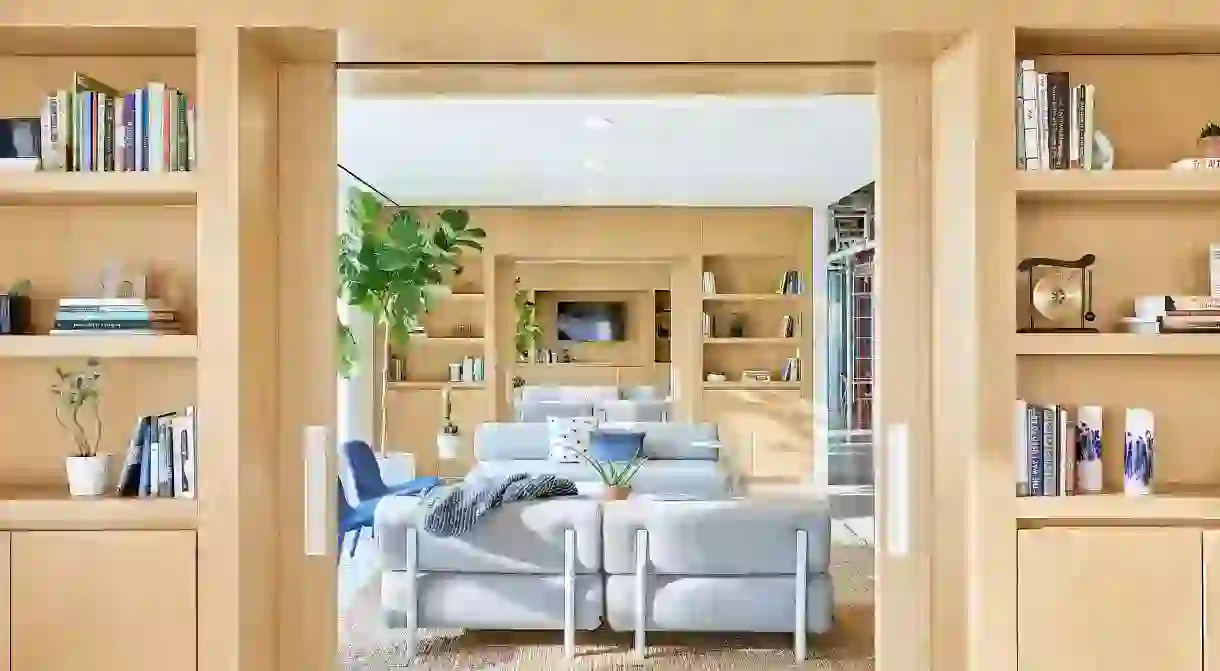Happily Planted: How To Create a Garden for the Office

It’s no secret that time spent in nature leads to a healthier, happier existence. Here’s how to take the outdoors in-house.

With succulents, cacti, and spindly air plants that are near-unkillable, it’s not a question why many turn to the garden shop, corner store, or Amazon for a little bit of photosynthesis to liven up a desk.
And for good reason: there are proven benefits to adding greenery to your home away from home. Plants purify the air they’re in and make us happier (and therefore more productive). But how can we incorporate plants in our offices in inspired ways, and not fall victim to droopy, sad afterthoughts?

Nina Etnier, a partner at New York’s FLOAT interior architecture studio, has some thoughts on that. “I have a hard time picturing a single concept document that we’ve put together with furniture and aesthetic styles that doesn’t have an image of a plant in it,” Etnier said in an interview. “It’s such a key element aesthetically for making a space feel complete, fresh, and alive.”
Nina and the architects at FLOAT are the chosen professionals behind the office designs of companies like Casper, Food52, and Glossier. For them, plants aren’t an add-on – they’re just as important as a piece of furniture or a wall.

Yet prior attempts and bad experiences can uproot the desire to purchase some green. Fear not, here are Etnier’s tips on how to revolutionize the office space with greenery:
Buy plants that have similar care requirements
This way if you decide to water them all at the same time you don’t have to worry about over or underwatering the rogue troublemaker that has different requirements than the rest. When in doubt, team up with your office’s plant whisperer to divide and conquer.
Plants, like humans, love natural light
Nowadays in newer office designs common areas like conference rooms, lunchrooms and lounges are the ones that have the windows, views, and light. Throw some leaves in there and watch your meetings become more enjoyable. If your office is only lit by bulbs and fluorescents don’t fret – plenty of plants do well in artificial light.

Rely on hardy, trusted favorites
ZZs
ZZ stands for Zamioculcas zamiifolia – a water-storing and lusty office mainstay. “They are hardy like a succulent but feel like a lush jungle plant,” says Etnier. ZZs can literally survive the worst owners of all time.
Succulents
“They are the easiest to sprinkle around the space without too much thought.” Succulents actually enjoy neglect and have a beautiful palette of greens, silvers and purples. Throw a few on your desks, conference tables, and bookshelves.
Yuccas
“They have a spiky, funky personality.” Yuccas can give your HQ a spark – which is very welcome on Mondays. They are desert plants that love light, so give them sun.
Philodendron
“There’s something really nice about having something organic take over an inorganic environment.” Crawling vines bring a certain presence to an office and a much-needed natural touch. Also, some species can even grow in just a cup of water (or that old coffee mug).
Fiddle Leaf Fig Trees
“Everybody is in love with fiddle leaf fig trees.” But be careful, these need a watchful eye. Don’t adopt one unless you have faith in your maintenance schedule.

Whether your ambitions include a single desk plant, or a verdant, lush office, the ultimate trick is to approach your office design as a creative work-in-progress. If your workplace feels too sterile and unnatural you’re not going to feel inclined to think of new ideas.
There’s psychology at play here. “You see a plant reacting to the environment you’re putting it in. You see the wear of a wood floor or a piece of furniture over time,” Etnier says. She calls this kind of beauty the “imprint of life in a space.”
That is – we want a workplace to evolve over time, and for that space to grow with us. Surround yourself with plants and flourish.














